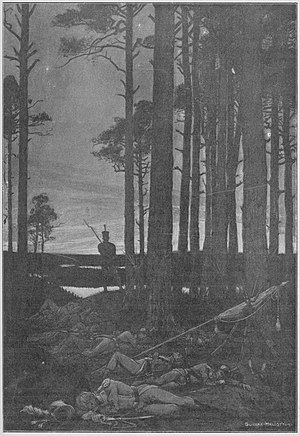
The Battle of Sävar was fought on Saturday, 19 August 1809, between Swedish and Russian forces, during the Finnish War; it was the last pitched battle to be fought in Sweden. After the Russian conquest of eastern Sweden in 1808, the Swedish forces retreated to actual Sweden. In March the following year, Russian emperor Alexander I launched a threefold attack on Sweden, to force the country into the Continental System and to cede Finland to the Russian Empire; despite early advantages at Kalix and the Åland Islands, the attack failed to achieve a quick ending to the war. After further campaigning in northern Sweden, with battles such as Skellefteå and Hörnefors, the Russian forces under Nikolay Kamensky occupied all of Västerbotten by June.

The Battle of Revolax took place on 27 April 1808 at Revonlahti, in Northern Ostrobothnia, Finland, when the Swedish supreme commander Wilhelm Mauritz Klingspor and the Savolax brigade under Colonel Johan Adam Cronstedt, a total of about 2,250 Swedes surprised an isolated Russian column of about 1,700 men under Major General Michail Leontievich Bulatov. The Russians were surrounded and tried to cut their way through but failed and the Russian general Bulatov was taken prisoner by the Swedes.

The Battle of Oravais was one of the decisive battles in the Finnish War, fought from 1808 to 1809 between Sweden and the Russian Empire as part of the wider Napoleonic Wars. Taking place in modern-day Vörå in western Finland, it is sometimes regarded as the turning point of the Finnish War: the last chance for Sweden to turn the war to her advantage. It was the bloodiest battle of the conflict, along with the Battle of Sävar, which some historians attribute to the exhaustion, resignation and desperation of the Swedish army: it was losing the war, and defeat led to its loss of Finland to Russia.

The Battle of Siikajoki was fought between Swedish and Russian troops on 18 April 1808 at Siikajoki, approximately 60 km south of Oulu, Finland. During the first stage of the Finnish War, the Swedish commander Wilhelm Mauritz Klingspor had decided to retreat from southern Finland, so that the Swedes would gain time, and more troops could be moved to Finland via Tornio. The retreat was also made in an effort to delay battles until the seas thawed, and to reserve troops in case the Danes took the opportunity to attack Sweden.

The Battle of Lapua was fought between Swedish and Russian troops on 14 July 1808 at Lapua, Finland. The Russians had set up defences around Lapua. The Swedes tried to outflank and surround the defending Russians. The Björneborg Regiment under Georg Carl von Döbeln distinguished itself during the battle. In the end the Russians managed to retreat, but the victory was an important one for the Swedish as it allowed them to continue their offensive.

The Battle of Alavus took place on 17 August 1808 in the vicinity of the town of Alavus, as part of the Finnish War. The Finnish army, under the command of General Carl Johan Adlercreutz defeated a smaller Russian force and drove it southwards. It was the last in a string of Swedish successes during the summer of 1808, and marked the turning point in the war.
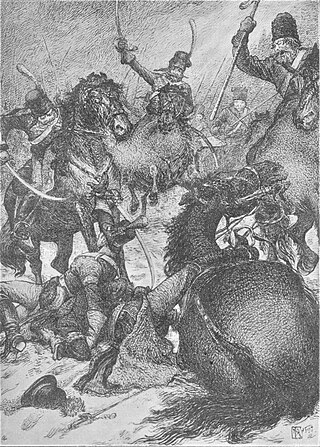
The Battle of Pyhäjoki was a retreating action fought on 16 April 1808, at Pyhäjoki in Northern Ostrobothnia during the Russian–Swedish war of 1808–09. The winter made the operations more difficult and the battle of Pyhäjoki became one of the first skirmishes to be fought after the Swedish retreat stopped. The Russian army had been following the Swedish army to the north. At the same time, they had left large portions of Finland to be occupied by the Russians. Yakov Petrovich Kulnev led a vanguard of 1,300 men — his army counted 4,000 men in total — and caught up with the rearguard of the retreating Swedish main army at the village of Ypperi. Skirmishes occurred all the way to Pyhäjoki, where the Swedes made a brief stand, before Wilhelm Mauritz Klingspor gave orders to von Döbeln and Gripenberg to continue the retreat to follow the original strategic plan. The Swedes had checked Kulnev's attack with about 2,000–2,500 men, however, as the Swedes fought a retreating battle, only one battalion at the time could go up against the Russians for most of the fighting. They had lost 183 men in killed, wounded and captured. Kulnev had lost 71 men at Pyhäjoki alone but probably around double that number when applying the losses from the fighting at Ypperi towards Pyhäjoki.

The Battle of Nykarleby was fought between Sweden and the Russian Empire during the Finnish War of 1808–1809.
The Battle of Vaasa was fought between the Kingdom of Sweden and the Russian Empire during the Finnish War (1808-1809).

The battle of Villmanstrand was fought during the Russo-Swedish War on 23 August 1741, when Russian forces of 10,000 men, under the command of General Peter von Lacy, assaulted Villmanstrand.

The Helsinki village landing was fought during the Finnish War between Sweden and Russia on 26–28 September 1808, a part of the battles of the Turku archipelago. King Gustav IV Adolf of Sweden planned a large landing operation, over 8,000 strong. Due to the difficult sea weather conditions, the task force under Colonel Anders Fredrik Skjöldebrad was forced to return to Sweden, damaged and broken. The other task force of 3,300 men under Lieutenant Colonel Gustav Olof Lagerbring landed at Helsinki village (Taivassalo) successfully and the troops advanced to the inland areas. The king of Sweden was late to the battle area himself; he arrived on 28 September 1808 in his own yacht.
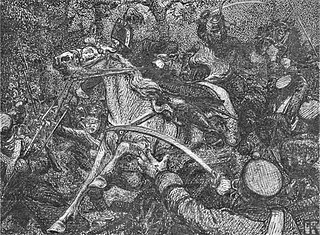
The battle of Ruona–Salmi or the battle of Kuortane was fought between Swedish and Russian troops on 1–2 September 1808 at Ruona and Salmi, Kuortane. The Swedish army was led by Wilhelm Mauritz Klingspor with 4,700–5,000 men under his command against the Russian army of 11,000 men under the command of Nikolay Kamensky. The battle turned up to be a major engagement in the war where fierce artillery fire occurred from both sides. Kamensky, advancing from Alanus, beat back the Swedish barriers and on 31 August approached the Swedish army's position near Kuortane.

The Battle of Karstula was fought between Swedish and Russian troops on August 21, 1808. The Swedish force under Otto von Fieandt was defeated by a much bigger Russian force under Yegor Vlastov. During the battle and retreat the Swedes lost 313 men, the Russians lost 245.
The Battle of Lintulaks was fought between Swedish and Russian forces at Lintulaks in Finland on 3 July 1808 during the Finnish War.

The Battle of Nummijärvi was fought between Swedish and Russian forces at Nummijärvi in Finland on 28 August 1808 during the Finnish War.
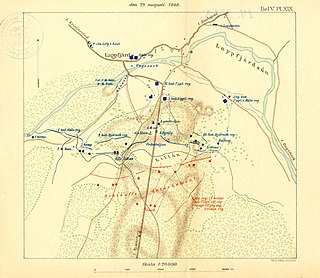
The Battle of Lappfjärd was fought between Swedish and Russian forces at Lappfjärd in Finland on 29 August 1808 during the Finnish War.
The Battle of Pälkjärvi was fought between Swedish and Russian forces at Pälkjärvi (Pyalkyarvi) in present-day Russia on 10 August 1808 during the Finnish War.

The Capitulation of Kalix took place during the Finnish War, on 25 March 1809, when 3,800–4,500 Swedish and Finnish troops under Hans Henrik Gripenberg surrendered to a much larger Russian army under Pavel Andreyevich Shuvalov, as part of a large Russian threefold attack against Sweden. The capitulation was characterised by the Swedish High Command as treacherous and Gripenberg was soon court-martialed.

The Battle of Skellefteå took place during the Finnish War, on 15 May 1809, when 6,000 Russians under Pavel Andreyevich Shuvalov attacked 700 Swedes under Johan Henrik Furumark, at Skellefteå, Sweden. The Swedes, who fought a delaying action to buy time for their provisions to be escorted to safety, were captured as the Russians flanked around and cut-off their way of retreat. Most provisions, however, were saved.
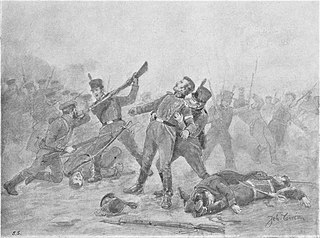
The Battle of Hörnefors took place during the Finnish War, on 5 July 1809, when 2,400 Swedes under Johan August Sandels went on a counter-offensive against 3,350 Russians under Ilya Alekseyev and Pavel Andreyevich Shuvalov, at Hörnefors, Sweden. After more than two hours of intense fighting along the Hörnån (river) Sandels ordered a retreat, after having been misinformed of a greater Russian flanking attack.
